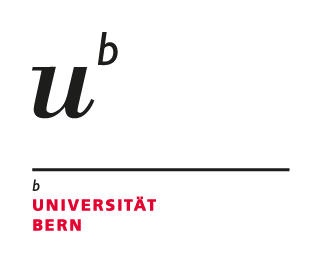Dissolution, growth and toxic ion uptake at phyllosilicate surfaces: Coupling atomistic interactions at the mineral-water interface with Kinetic Monte Carlo model.

Project title
Dissolution, growth and toxic ion uptake at phyllosilicate surfaces: Coupling atomistic interactions at the mineral-water interface with Kinetic Monte Carlo model.
Project description
It is the matter of fact that just a few minerals control the uptake behavior of a large number of chemical elements in the subsurface environment. Due to high specific surface area and large pH buffering capacity, phyllosilicate minerals are one of the most important sinks for pollutants in soils and subsurface sediments. The entrapment of contaminants onto the mineral surfaces is the primary factor determining their transport, deposition, reactivity and eventually their effective toxicity. A model based description of ion adsorption and incorporation by minerals is needed to understand and describe the transport of heavy and radioactive elements in order to take environmental pollution under control and to develop cost effective remediation strategies.Current modelling approaches applied for cation uptake by phyllosilicates have well-recognized limitations. By far the most widely used mechanistic sorption model for phyllosilicates minerals e.g. 2 site protolysis non electrostatic surface complexation and cation exchange (2SPNE SC/CE) do not include effects of diffuse double layer formation at the interface of the mineral surface and aqueous solution. On the other hand numerous attempts to include the electrostatic term on the basis of linearized Poisson-Boltzmann equation in the sorption model failed to describe the whole range of experimental data. The difficulties are probably related to the omission of the site specific ion surface interaction parameters, irreversible ion uptake and the limited applicability of linearized Poisson-Boltzmann equation (e.g. ion-ion correlation effects are neglected) at ionic strength above 0.2 M, or in presence of divalent ions. Furthermore, the adsorption of divalent and trivalent cations compatible with the octahedral structure of phyllosilicates have shown to be a precursor of the mineral growth. 2SPNE SC/CE does therefore not count for any kind of newly formed phases, such as neo-formed phyllosilicates. Thus, the commonly used models for adsorption do not describe the irreversible metal uptake due to mineral growth as observed in nature. Therefore, such models can’t produce quantitatively correct results for the long term prediction of the heavy metal mobility in the environment.This PhD project is aimed at combining the molecular based description of surface ion adsorption and protolysis at edge sites of phyllosilicate minerals with a Kinetic Monte Carlo (KMC) model of dissolution and growth. The sorption will be modelled by the titration Grand Canonical Monte Carlo (GCMC) method that was previously applied in house to simulate the ion equilibria in cement systems. This approach allows us to calculate equilibrium ion distribution at the surface for the given chemical potential of ions and pH. The use of crystallographic surface geometry, site specific ion surface interaction parameters, obtained in previous quantum mechanical simulations, together with unrestricted primitive model of electrolytes will allow to capture simultaneously the site specific interaction of ions with the surface and electrostatic effects (e.g. DDL, ion exclusion, electrostatic screening) successfully. The data on the interface structure obtained from the GCMC modelling will be incorporated into the KMC model of crystal growth. The scientific novelty of this project is that the effects of molecular solvent on the kinetics of dissolution and precipitation processes will be considered explicitly. To our best knowledge such an approach has not been applied before and offers a great opportunity for the realistic kinetics modelling of dissolution and growth. The combination of classical atomistic sorption with KMC approach will make possible the formulation of the unified modelling approach for adsorption, dissolution and growth. The development of GCMC and KMC models can be substantially advanced by the use experimental data for model verification. A representative experimental database of sorption and titration data is available in house. Similar, the high resolution images of surface topology of dissolving and growing phyllosilicates exist from our previous work and the studies of other groups published in literature. To implement the new modelling approach, the student will use and further extend the existing in house codes for GCMC and KMC simulations, respectively. Since these codes have been developed in house by the project applicants the necessary expertise and support is available. The coupled model for growth/dissolution and sorption is indispensable for the understanding of the long term behavior of toxic elements in the Earth environment. The most direct application of the model will be related to the geological disposal of radioactive waste where clay rich materials are considered as most efficient barrier slowing down the migration of radionuclides and landfill sites contaminated with heavy metals. The basic concept for coupling the sorption with mineral growth will have a general application to mineral surface reactivity (e.g. impurity entrapment and kinetically controlled element partitioning).
Funded
Subject(s)
Dewey Decimal Classification::500 - Science
Keyword(s)
ab initio
reaction mechanism
activation energy
metadynamics
density functional theory
reaction mechanism
activation energy
metadynamics
density functional theory
Project Start Date
01-Jan-2017
Expected completion date
31-Dec-2020
Language(s)
en
en
en
Status
Active
Partner
 Loading...
7
0
20
0
false
Loading...
7
0
20
0
false



